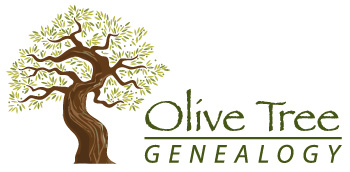Amsterdam Doopregisters (Baptism Registers) follow a fairly consisent format. They show names (sometimes an occupation) of father, mother, child and sponsor(s).
You don't need to read Dutch, you only need to be able to pick out and read the names of the individuals you are interested in. But it is more difficult than it sounds. 17th century letter formations are very different than what we are used to. Dutch names and spellings are something new to many of us as well.
 Example from a 17th Century Marriage record from Amsterdam
Example from a 17th Century Marriage record from AmsterdamAs I was struggling to learn how to read this early Dutch script, I made up a little booklet which I add to each time I figure out something new.
I use my little home-made guide to help me interpret what I am looking at in these early (1600s) records. Other researchers asked me to send them copies of my notes and examples, so I made up a mini-tutorial.
I am not an expert, I muddle along as best I can, but researchers I sent the tutorial to seemed to find it helpful, so here it is. I hope that if any of you are starting to dig into those distant records you will find this at least interesting if not helpful in some small way.
I'll add to these Blog notes as I get the pages of my little guide scanned. Remember, it's FUN and it's NEW and it can be intimidating but just keep on plowing through one step at a time.
Source of Registers: Amsterdam Doop (Baptism) Registers on Microfilm
Finding an entry on a page of records from 1621
 Click on the image for a larger picture, or View larger image. You can also view a larger image here
Click on the image for a larger picture, or View larger image. You can also view a larger image hereThis is a page of church baptismal records from 1621 in Amsterdam. The entry I was looking for was for Claesje the daughter of Teunis Dircks & Aefje Pieters.
This is a relatively easy page to read compared to some! The handwriting is neat and legible, the filmed record is not dark, and the size of the writing is not too small.
Reading Dutch Script: Studying the letter formations on a page of records

If you need help with Dutch names, you might find my section on New Netherland (present day New York) of some help. Anyone with ancestors from New York in the 1600s may find themselves with Dutch ancestry (which is what got me started on all this!)
It gives examples of Dutch names = English names = Shortened Dutch names (nicknames). It also explains the use of suffixes -je or -tje, -je, -tje, -ie and -ke
To learn the patronymic naming system and the suffixes used there, you might find Understanding Patronymics helpful
Reading Dutch Script: Steps to take when you find an entry of interest

Step 1: Trace the entry as it displays on the microfilm reader
Step 2: Copy the entry
Step 3: Study the letter formations. Figure out what the entry says
Reading Dutch Script: More Letter Formations

Using this same page of church records we can learn other letter shapes and names
Reading Dutch Script: Figuring out even more letter formations



3 comments:
If you are researching Dutch ancestors, you might be interested in the Legacy QuickGuide that I wrote on Dutch genealogy.
http://legacy.familytreewebinars.com/?aid=1610
This is wonderful! I have looked at many Dutch records and these are great tips for reading them. Thanks so much.
The FamilySearch Wiki contains word guides that might help. See https://familysearch.org/wiki/en/Netherlands_Language_and_Languages
Post a Comment